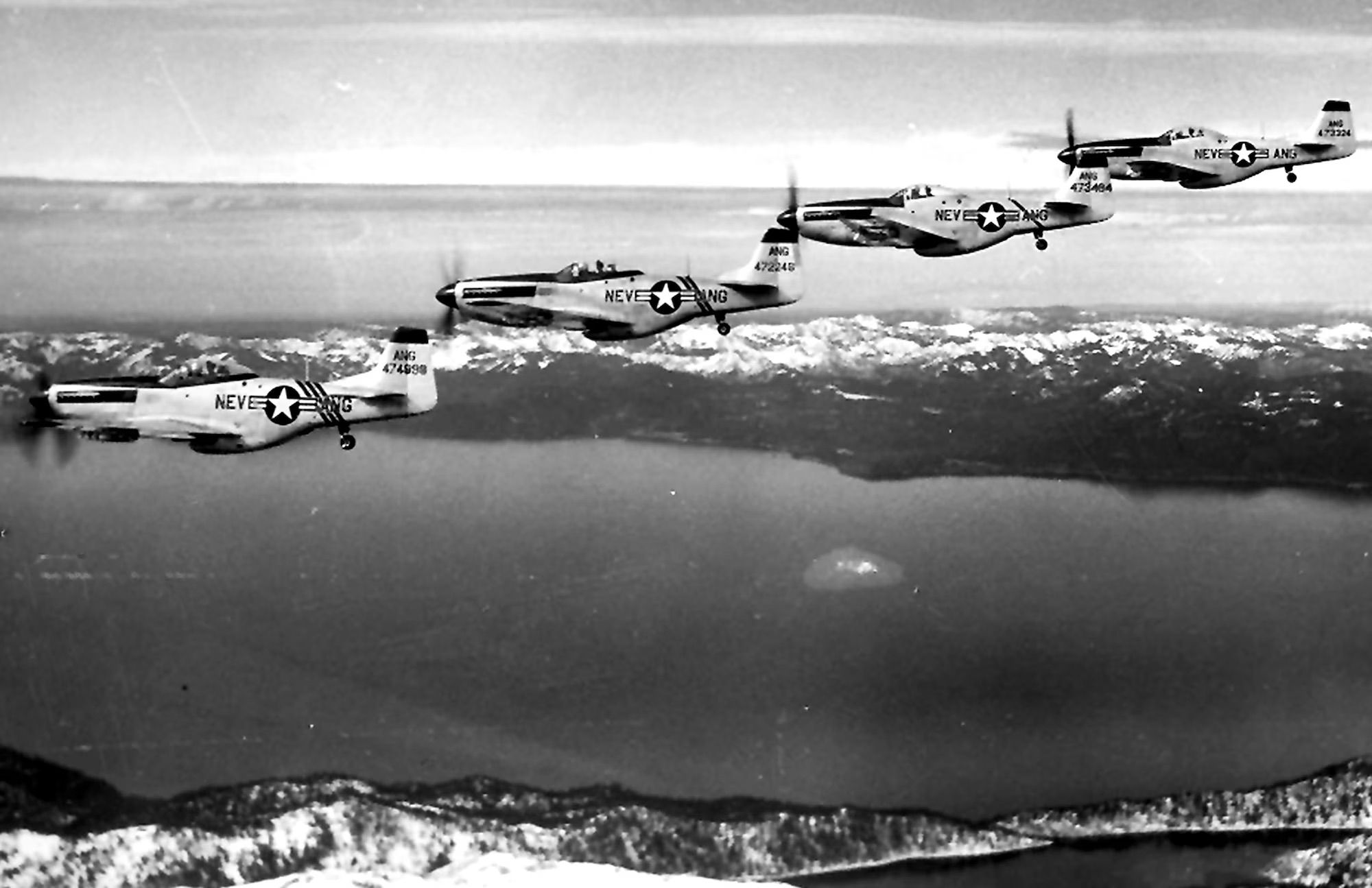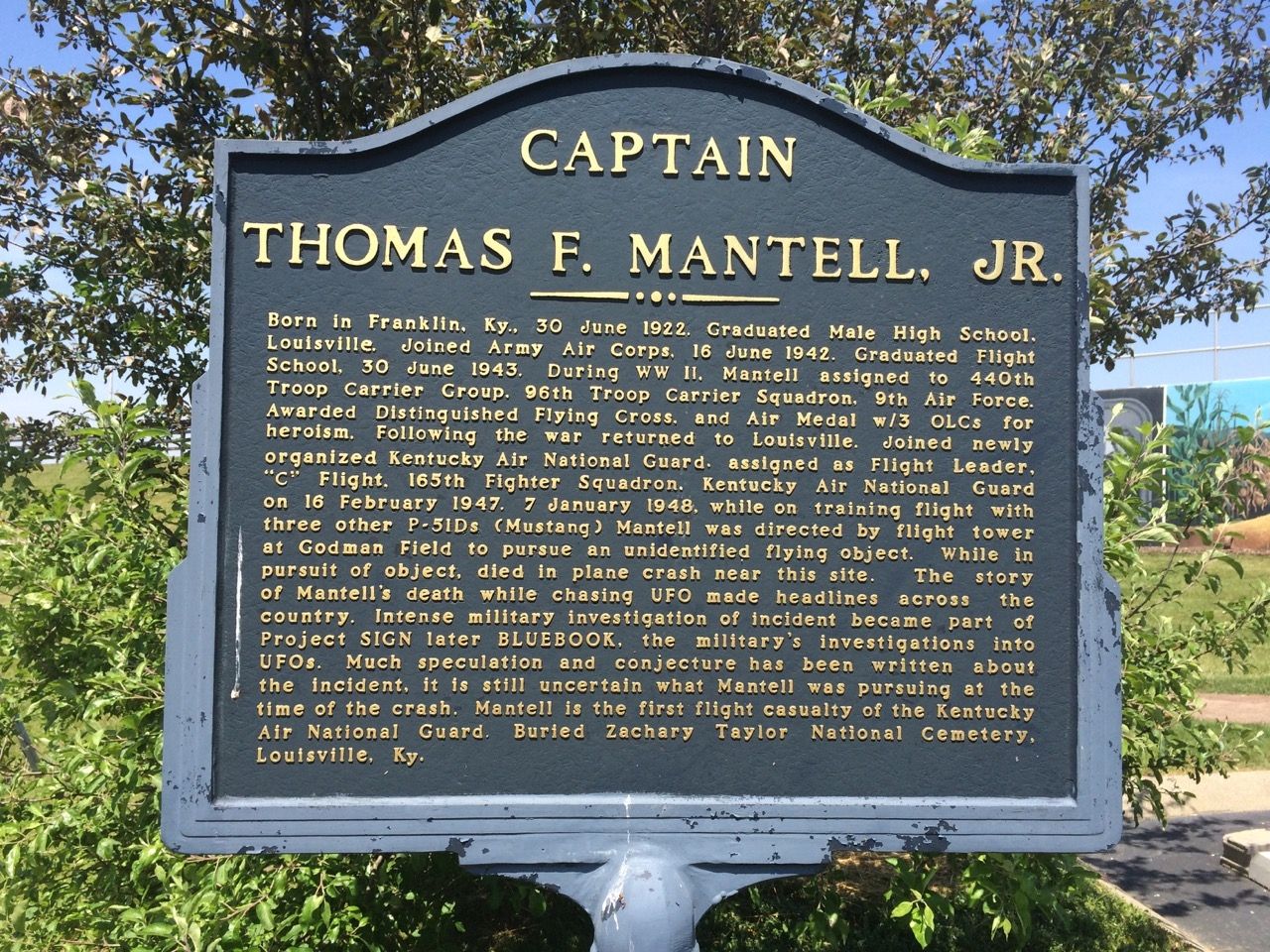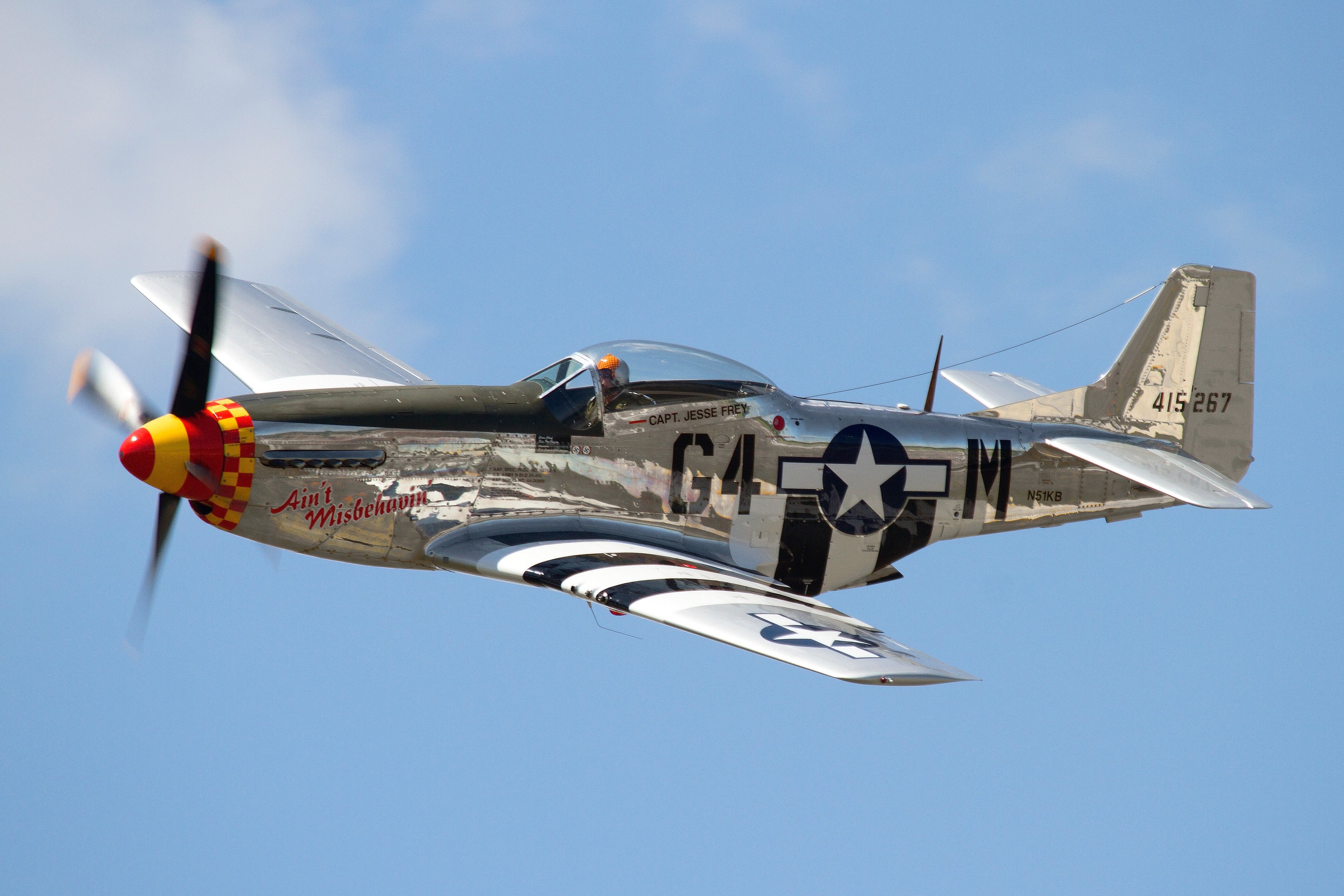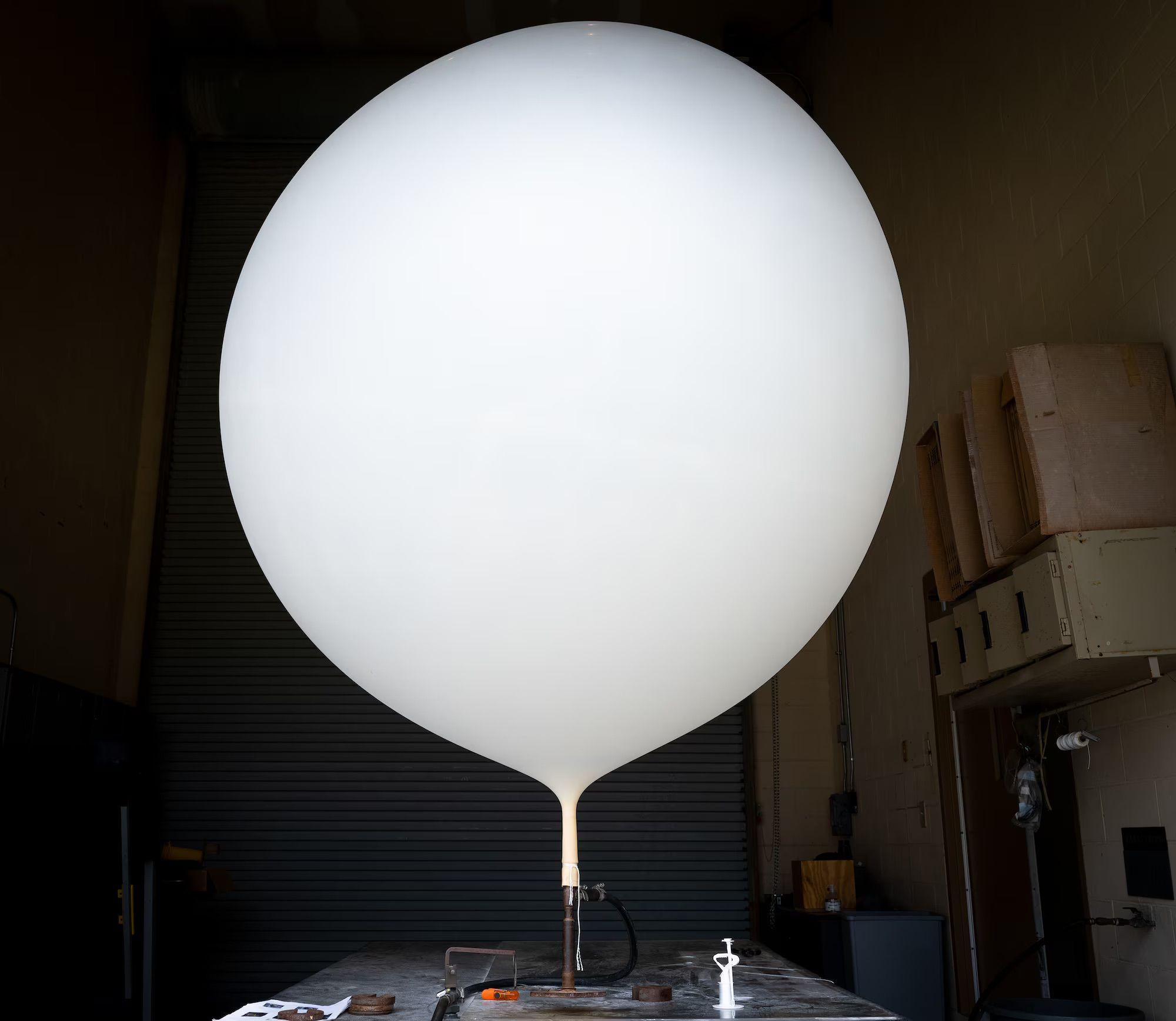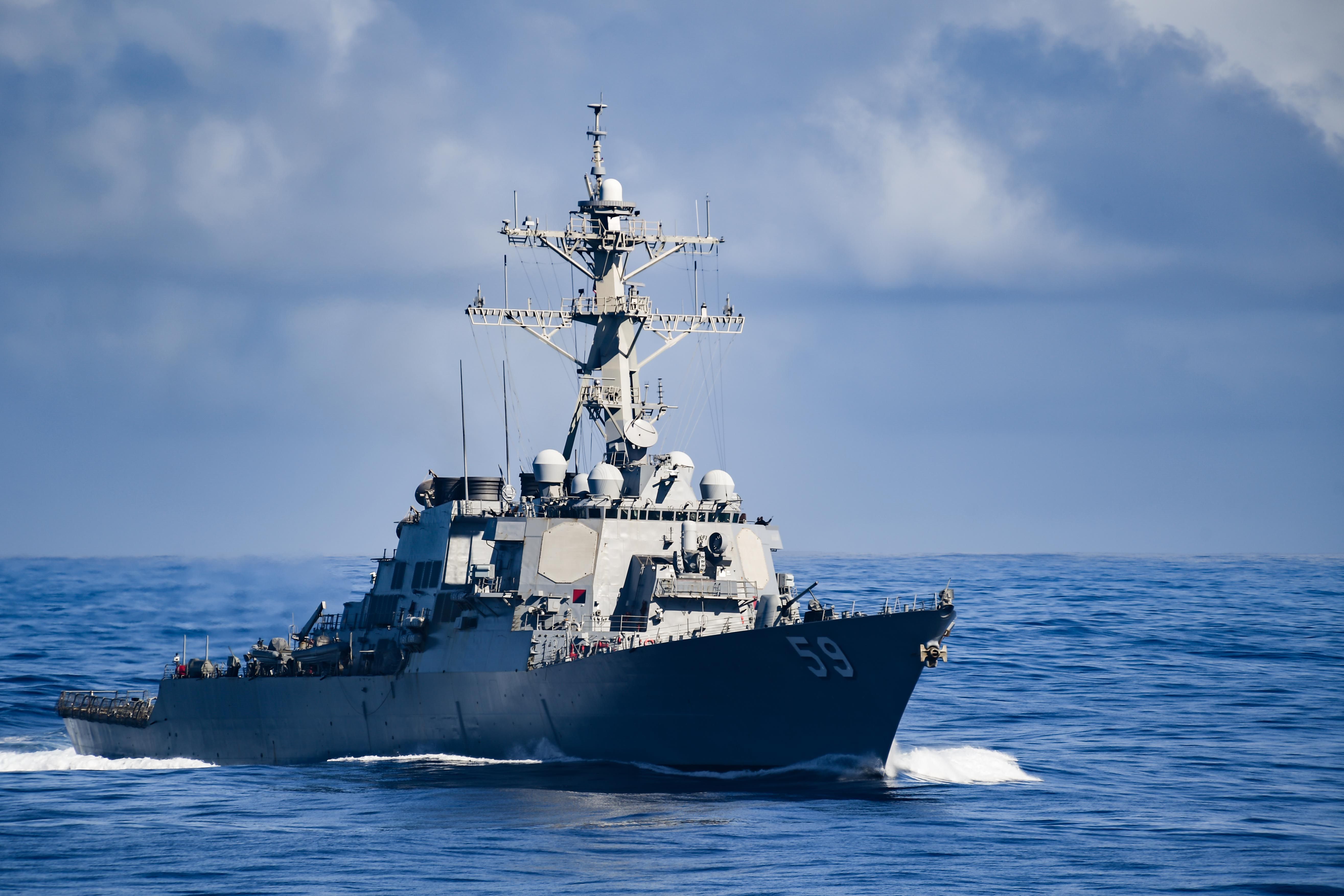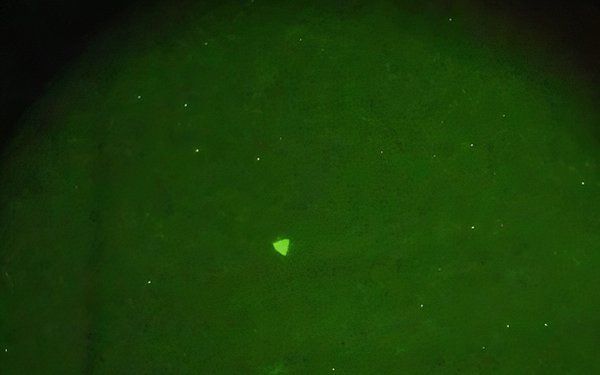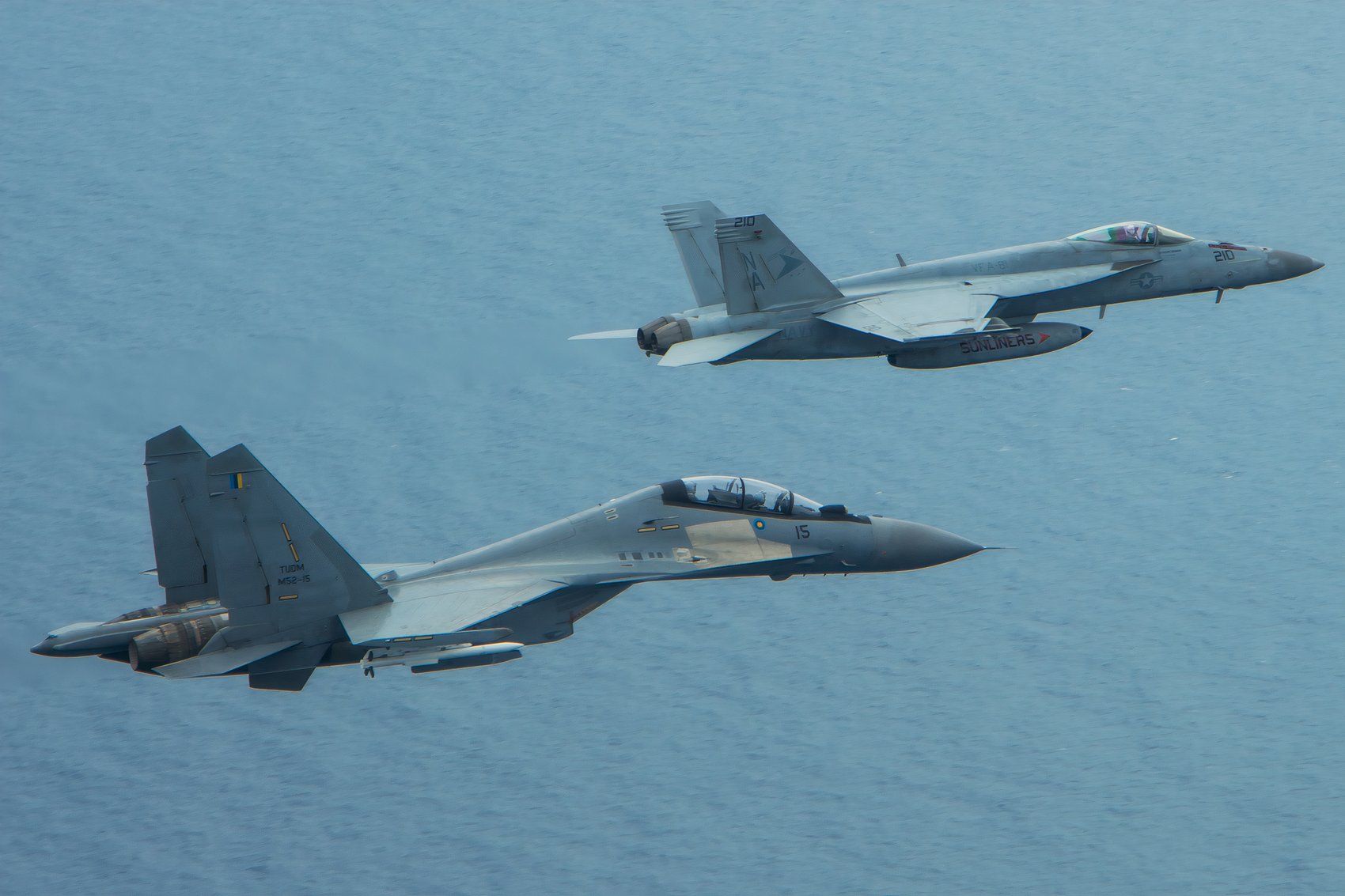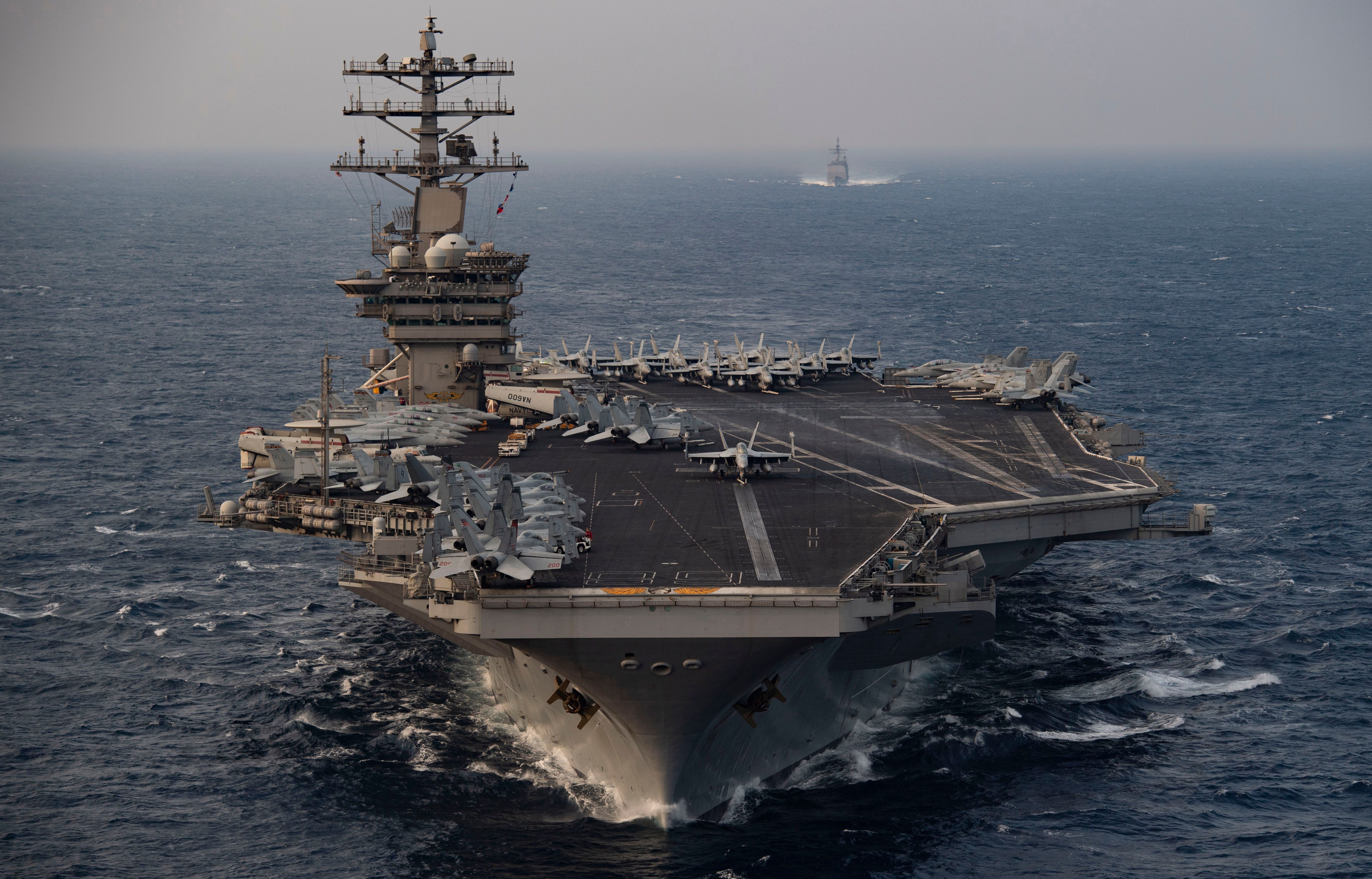
5 Unexplained UAP Sightings Reported by US Military Pilots
Unidentified Aerial Phenomena (UAP), defined by NASA as “observations of events in the sky that cannot be identified as aircraft or known natural phenomena from a scientific perspective,” have long captivated human curiosity. Still, when military pilots—trained professionals with unparalleled experience in the skies—report encounters with mysterious objects, the intrigue deepens. These sightings, often corroborated by radar data and other advanced technology, challenge our understanding of flight and physics. Here, we explore five of the most compelling UAP encounters reported by military pilots.
Photo: US Army
1
The Mantell Incident Of 1948
Led to a deadly crash
- Date: January 7, 1948
- Location: Near Godman Army Airfield at Fort Knox, Kentucky
On the afternoon of January 7, witnesses across Kentucky began reporting sightings of an unidentified object in the sky. Observers described it as a large, metallic object, often depicted as circular or disk-like, that moved slowly but was capable of rapid acceleration. Reports of the object were relayed to military personnel at Godman Army Airfield, prompting officials to investigate.
Airfield personnel, including the base commander, Colonel Guy F. Hix, sighted the UAP around 1:00 PM. The descriptions from the airfield echoed those of civilian observers. The object appeared to be large, bright, and stationary at an extremely high altitude. Concerned about its presence and potential threat, Colonel Hix ordered inquiries to nearby air traffic control centers and airports. However, no flights or weather balloons that could account for the object were reported in the area.
Photo: USAF
Shortly after the UAP sightings were confirmed, a flight of four P-51 Mustang aircraft from the Kentucky Air National Guard was in the vicinity on a routine mission. Godman Tower requested Captain Thomas F. Mantell, a fighter pilot during WWII and the flight leader, investigate the unidentified object. At approximately 2:45 PM, Mantell and his team began their pursuit. The other pilots initially joined him, but lacking sufficient oxygen supplies for high-altitude flight, three of the aircraft broke off the chase. Mantell, determined to intercept the object, continued the climb, eventually surpassing an altitude of 20,000 feet.
Upon approaching the UAP, Mantell communicated with the tower, describing the object as large, metallic, and immense.
“It appears to be a metallic object or possible reflections of sun from a metallic object, and it is of tremendous size. I’m still climbing. The object is above and ahead of me moving at my speed or faster. I’m trying to close in for a better look.” – Thomas Mantell
His final transmission was purportedly fragmented, with some accounts suggesting he described the object as resembling a “tremendous metallic sphere” or “something that looks like it’s not from this world.”
At around 3:18 PM, Mantell’s aircraft began a sharp descent, spiraling out of control. His P-51 crashed into a farm near Franklin, Kentucky, killing him instantly. Later investigations revealed that Mantell likely lost consciousness from lack of oxygen as he pursued the high-altitude object.
Aftermath and investigation
The death of Captain Mantell brought significant attention to the UAP phenomenon, with widespread media coverage and speculation. For the American public, it was one of the first instances where a UAP encounter allegedly resulted in loss of life, amplifying fears and fascination surrounding extraterrestrial visitation. The incident also spurred the US military to take UAP sightings more seriously, laying the groundwork for systematic investigations like Project Sign, the precursor to Project Blue Book.
Initially, various explanations were suggested to rationalize the event. Some postulated that Mantell had been mistakenly chasing the planet Venus, as it was visible in the sky during the afternoon. However, this theory was met with skepticism due to the descriptions of movement attributed to the object, which seemed to defy the characteristics of a celestial body.
Another early theory proposed that Mantell might have been pursuing a secret military project or a balloon, such as a Skyhook weather balloon commonly used for high-altitude research. The possibility of a top-secret experimental aircraft was also considered. However, as the investigation progressed, these theories failed to provide a satisfactory explanation for the incident. The Mantell incident remains one of the most well-known and debated cases in UAP history, capturing the imagination of UAP enthusiasts and skeptics alike.
Photo: BlueBarronPhoto l Shutterstock
2
The Gorman Dogfight
27 minutes against an unidentified flying object
- Date: October 1, 1948
- Location: Fargo, North Dakota
On October 1, 1948, Lt. George Gorman, a pilot for the North Dakota Air National Guard and decorated WWII veteran, was wrapping up practice maneuvers with his squadron’s P-51 Mustangs. At 25 years old, Gorman was a respected and battle-hardened aviator determined to log additional flight hours for the day.
While flying solo over Fargo, Gorman spotted a small glowing object below him. Intrigued, he pursued it, engaging in a 27-minute “dogfight.” The round light darted away, stopped abruptly, climbed, and outmaneuvered his aircraft repeatedly—the kind of behavior no human-piloted plane could achieve.
Gorman described the object as white and round, roughly six to eight inches in diameter, and exceptionally bright. He noted that it exhibited no audible sound, exhaust trail, or visible wings. Despite his best efforts, Gorman was unable to close the distance between his aircraft and the mysterious object, as it demonstrated agility far beyond the capabilities of any conventional aircraft of the era.
At one point, Gorman reported that the object made a sharp turn and headed straight toward his plane. Preparing for a potential collision, he dove to avoid contact, but the object adjusted its course at the last moment and passed over his canopy. According to UAP historian Curtis Peebles, this near-miss confirmed for Gorman that the object was not a natural phenomenon but a seemingly controlled entity with remarkable maneuverability. Eventually, the object climbed rapidly into the sky and disappeared.
“I am convinced that there was definite thought behind its maneuvers. I am further convinced that the object was governed by the laws of inertia because its acceleration was rapid but not immediate and although it was able to turn fairly tight at considerable speed, it still followed a natural curve. When I attempted to turn with the object I blacked out temporarily due to excessive speed. I am in fairly good physical condition and I do not believe that there are many if any pilots who could withstand the turn and speed effected by the object, and remain conscious. The object was not only able to out turn and out speed my aircraft … but was able to attain a far steeper climb and was able to maintain a constant rate of climb far in excess of my aircraft.” – George Gorman
Aftermath and investigation
When Gorman returned to base, both he and his P-51 showed no signs of damage. However, the encounter left Gorman shaken and convinced he had witnessed something extraordinary. Subsequent radar reports from a nearby control tower suggested that an unidentified object had indeed been present in the area, corroborating Gorman’s account. The object’s movements were described as extraordinarily precise and rapid, defying the capabilities of known aircraft at the time.
The aftermath of the Gorman Dogfight incident sparked an extensive investigation by the US Air Force. Military investigators from Project Sign were dispatched to analyze the event. Gorman underwent extensive debriefing, maintaining his account with unwavering consistency. Notable details from his report included the object’s apparent lack of mass or visible propulsion system, its sharp angular turns, and its immunity to gravity’s effects.
While the official conclusion pointed to a weather balloon as the possible explanation, many, including Gorman himself, vehemently disputed this explanation. The Gorman Dogfight remains one of the most intense aerial engagements with an unidentified flying object, and the corroborating accounts of radar operators make this case an enduring mystery. Unless, of course, you believe a decorated WWII fighter pilot would engage in a 27-minute dogfight with this:
Photo: USAF
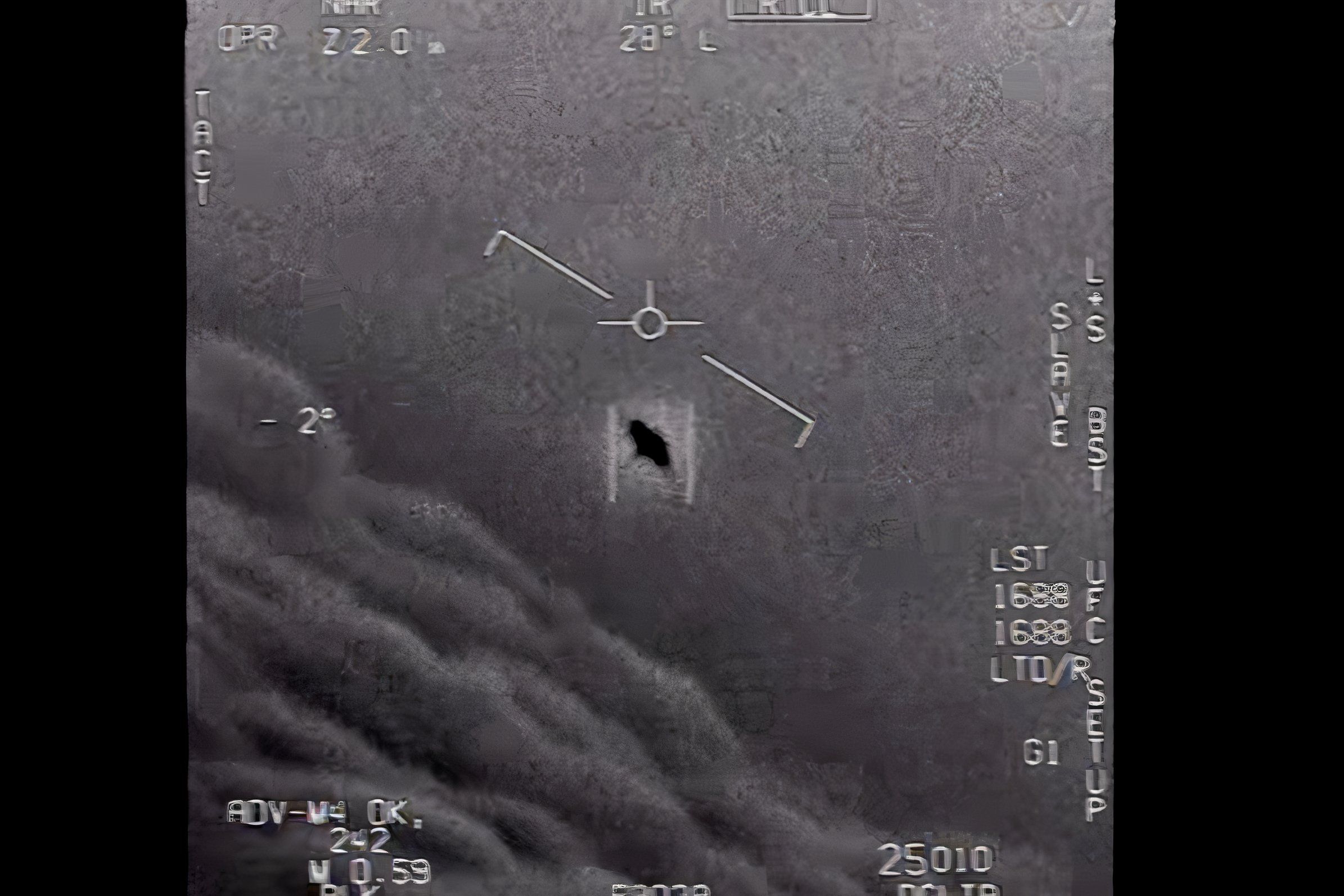
Related
UAPs Or UFOs: We Still Don’t Know What They Are
A joint hearing by subcommittees of the House Oversight Committee held on Wednesday on Unidentified Anomalous Phenomena (UAPs) raised more questions about the strange objects that multiple reputable sources have witnessed. Unfortunately, even after the hearings, credible answers are still scarce. The term Unidentified Flying Object (UFO), still widely used in popular lingo, has been abandoned by government agencies researching these phenomena because of the stigma associated with the acronym. At first, the term UAP referred to Unidentified Aerial Phenomena, but that has changed since some mysterious objects are not in the skies but in the seas.
Officials testifying before Congress indicated that thousands of videos exist of unexplained sightings of objects behaving in a manner that exceeds the currently known technological capabilities of human-made craft. However, they did not dismiss the possibility that these objects might be unknown human-made technology.
As NPR reports, ther
Photo: US Navy
3
Mysterious flashing triangles in the sky
Perplexing US Navy radar operators
Date: July 2019
Location: The coast of Southern California
In July 2019, during military exercises conducted off the coast of Southern California, Navy personnel aboard the USS Russell observed multiple unidentified objects in the air, the most striking being a series of triangular craft that appeared to hover in the night sky. Using night-vision equipment, they captured footage of these objects, which were illuminated by flashing lights, giving a clear view of their triangular shapes.
Photo: US Navy
The UAPs demonstrated erratic flight patterns and seemingly unconventional behavior. Unlike conventional aircraft, these objects exhibited no apparent propulsion mechanisms, such as exhaust trails or rotors, yet moved with remarkable agility. Witnesses described these movements as defying the laws of physics; the objects appeared to accelerate, decelerate, and change direction with ease, raising questions about their origin and technology.
Corroborating evidence came through multiple channels. Radar operators aboard other naval vessels in the area detected unidentified contacts moving at speeds and altitudes inconsistent with known aircraft. This radar data matched the visual observations made by the USS Russell crew, confirming the presence of unknown aerial phenomena. Furthermore, other nearby Navy ships reportedly experienced similar sightings during the same period, adding more weight to the encounter.
The triangular UAPs reportedly maintained their presence over US military exercises for some time, suggesting intentional observation or surveillance. This extended duration also gave military personnel more time to record and analyze their behavior, ensuring detailed documentation of the events.
Aftermath and Investigation
News of the 2019 UAP incident gained traction when leaked footage emerged online in April 2021. The video quickly spread across media platforms, reigniting global interest in UAPs. Shortly after the leak, the Department of Defense confirmed the video’s authenticity, stating it had been recorded by Navy personnel and remained under active investigation.
The Pentagon’s Unidentified Aerial Phenomena Task Force (UAPTF) led the investigation into the encounter. Analysts reviewed the visual footage, night-vision recordings, and supporting radar data to assess the object’s physical characteristics and flight dynamics. Despite these efforts, no concrete conclusions were reached — the objects could not be identified as any known aircraft or explainable natural phenomena.
The incident coincided with a growing push for transparency around UAPs. By June 2021, the Office of the Director of National Intelligence (ODNI) released a preliminary report to Congress, summarizing 144 UAP encounters documented between 2004 and 2021. The triangular flashing UAPs were among the cases highlighted for their lack of plausible explanations. The report noted that these phenomena could not be easily attributed to foreign adversaries, US experimental technology, or atmospheric conditions, leaving the objects’ origins shrouded in mystery.
4
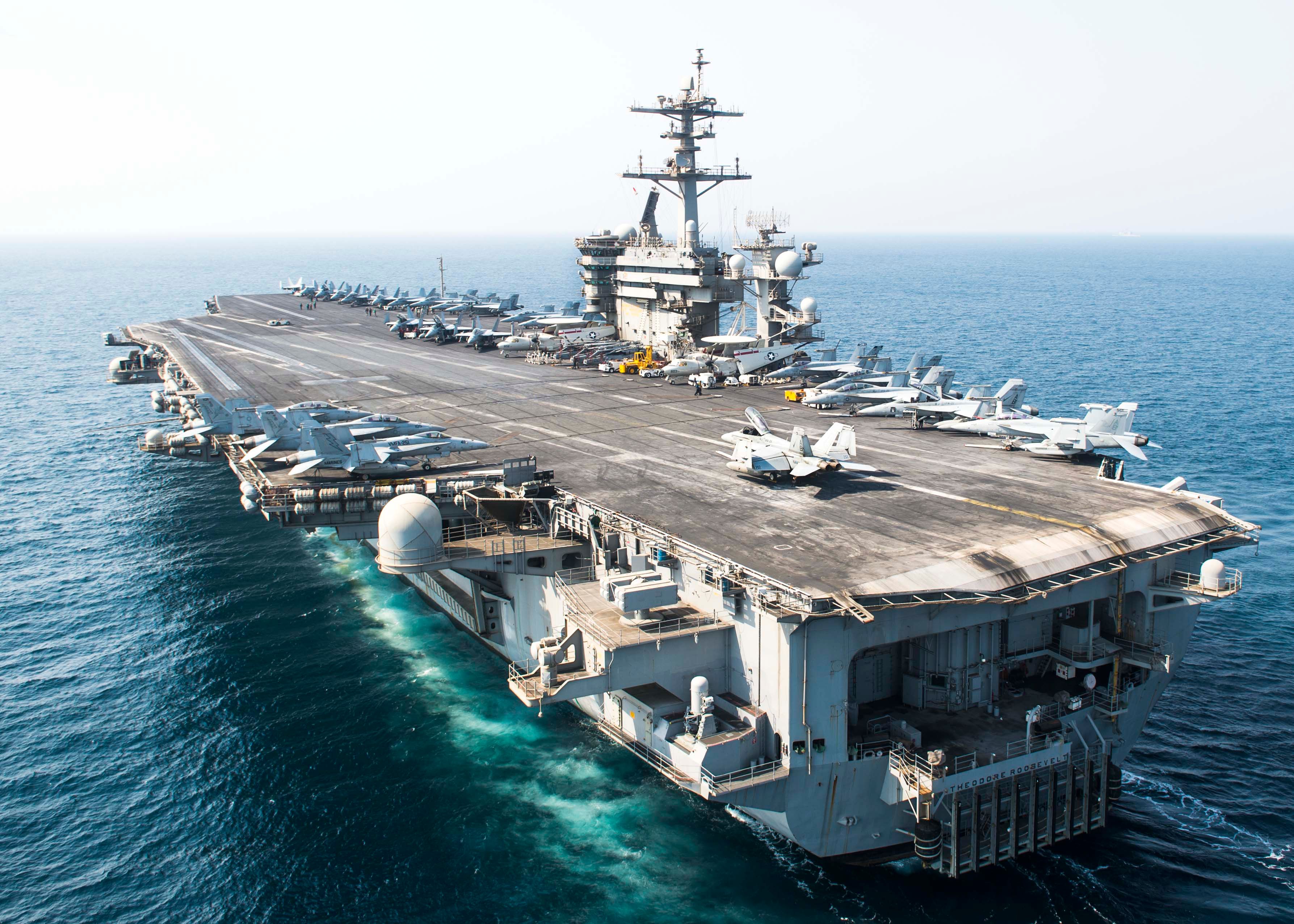 F/A-18s encounter UAP off the US East Coast
F/A-18s encounter UAP off the US East Coast
Nearly caused a mid-air collision
- Date: 2014-2015
- Location: US East Coast, restricted airspace
In 2014 and 2105, Ryan Graves and other F/A-18 Super Hornet pilots from the USS Theodore Roosevelt witnessed and tracked unexplained objects in restricted airspace off the US East Coast. These objects were detected almost daily, both visually and by advanced radar systems, indicating their presence over an extended period. Graves and his colleagues described the UAPs as displaying capabilities far beyond conventional aircraft.
The objects were often spherical and measured around five to fifteen feet in diameter, sometimes enclosed within a translucent cube-like structure. They exhibited no visible means of propulsion yet could accelerate abruptly, perform high-speed maneuvers, and hover in place even against strong winds. Many of these sightings were corroborated by radar and infrared systems aboard the Super Hornets, confirming that the phenomena were not mere radar glitches or pilot misinterpretations.
One particularly chilling incident involved witnessing a UAP pass within striking distance of two Navy aircraft, nearly causing a midair collision. This prompted significant concern among the aviators, given the potential threat to their safety. Despite this, efforts to understand or engage with the UAPs yielded no results, as the objects evaded all conventional methods of tracking or interception. These experiences left Graves and his fellow pilots grappling with the perplexing realization that such technology existed—but they had no idea who or what was behind it.
Aftermath and Investigation
Following these encounters, Ryan Graves took on a critical role in bringing the issue to light. He recognized the safety and national security implications and advocated for greater transparency and research into UAP phenomena. Graves contributed to internal Navy discussions on reporting and documenting UAP sightings, leading to implementing a more structured reporting system for such incidents.
Public interest in Graves’ accounts grew after videos from his squadron’s encounters—such as the now-famous “Gimbal” footage—were declassified and released by the Pentagon in 2017. These videos, showing objects performing seemingly impossible maneuvers, captured global attention and spurred both fascination and skepticism. Graves himself has testified before Congressional hearings, urging policymakers to fund further investigation into UAP phenomena and their potential implications.
Graves also founded “Americans for Safe Aerospace,” an organization dedicated to supporting aircrew who encounter UAPs and promoting safe practices for reporting and analyzing such phenomena. His advocacy has brought the topic into mainstream discussions, emphasizing the need for scientific inquiry and open-mindedness. While official explanations for these sightings remain elusive, the investigations prompted by reports like Graves’ have helped shift the conversation around UAPs from fringe speculation to a legitimate area of study.
Photo: US Navy
5
The “Tic Tac” UAP Encounter
Impossibly fast
- Date: November 14, 2004
- Location: Off the coast of San Diego, California
On November 14, 2004, Cmdr. David Fravor of the USS Nimitz took off in his F/A-18F for a routine training mission over the Pacific Ocean. Cmdr. Jim Slaight, his wingman, was flying nearby in another F/A-18 Super Hornet. During the exercise, the USS Princeton’s radar detected multiple unknown objects descending rapidly from 80,000 feet to just above sea level. Operators diverted Fravor and his wingman to investigate.
Upon arrival, Fravor spotted a white, oblong craft hovering erratically over the ocean. It was shaped like a “Tic Tac” candy, approximately 40 feet long, and starkly devoid of wings or propulsion mechanisms. As he approached, the object mimicked his movements before accelerating away at a speed no known jet could match.
Fravor later described the object’s movements as unlike anything he had ever seen, displaying capabilities far beyond modern aviation technology. The craft demonstrated an ability to stop abruptly, change directions instantaneously, and accelerate at an incredible speed, all without any visible means of propulsion or flight surfaces.
After the Tic Tac vanished, radar operators aboard the USS Princeton tracked it reappearing 60 miles away in less than a minute—an impossible feat for any known aircraft. Fravor and Slaight returned to their carrier shaken but adamant about what they had witnessed.
Aftermath and investigation
The Tic Tac incident sparked significant interest, prompting an investigation into the encounter, which involved the analysis of radar data, video evidence, and pilot testimonies. The evidence collected supported Fravor’s account and provided further corroboration of the sighting. Experts and investigators delved into possible explanations, considering alternative hypotheses such as sensor anomalies, optical illusions, or the involvement of secret military technology. However, none of these theories provided a sufficient explanation.
In the years that followed, the incident gained even more credibility when the Pentagon confirmed the existence of the Advanced Aerospace Threat Identification Program (AATIP). The AATIP, a covert government initiative, aimed to investigate various unidentified aerial phenomena, including the Tic Tac sighting. This acknowledgment by the Pentagon further validated the significance of the encounter, regarded as one of the most well-documented and compelling UAP cases to date.
The accounts of military pilots, rooted in expertise and credibility, underscore the need for continued investigation and an open-minded approach to these phenomena. Whether they represent advanced technology, natural phenomena, or something even more extraordinary, these encounters challenge our perception of the universe and defy conventional thinking. While these mysteries may never be solved, attempting to understand them could lead to discoveries and technological advancements once thought impossible.
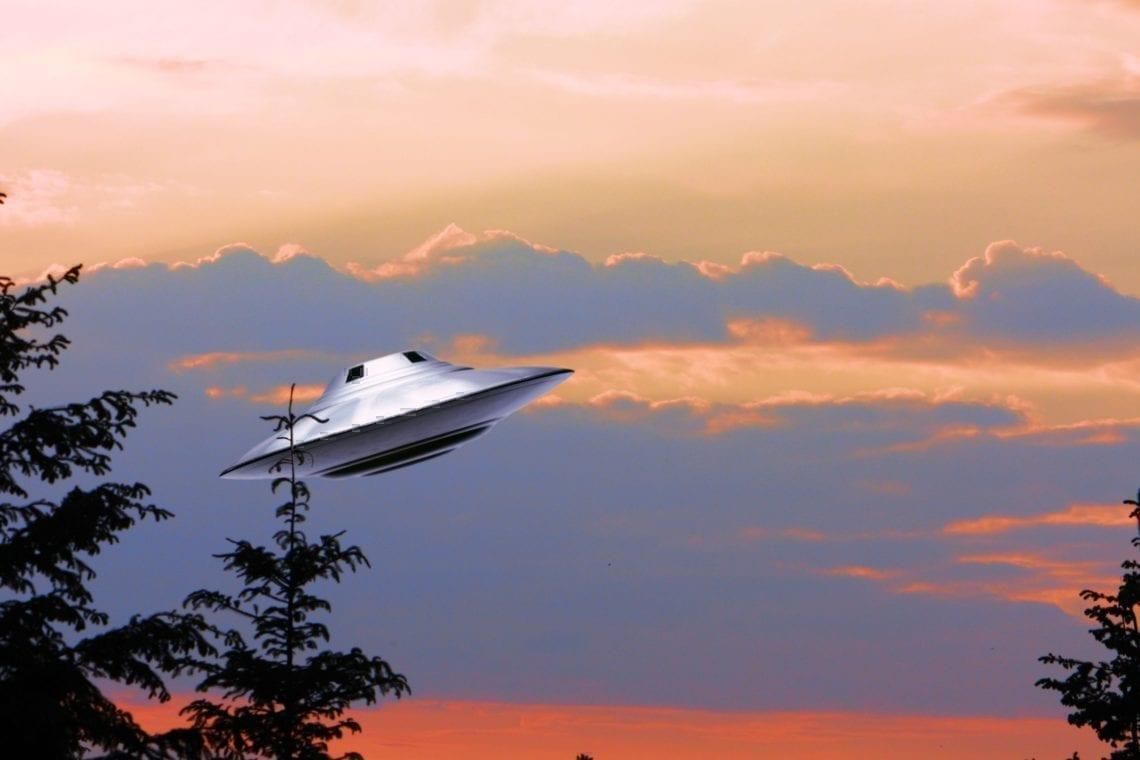
Related
Both British Airways and Virgin Atlantic Pilots Encounter UFO’s Whilst Flying Over Ireland
